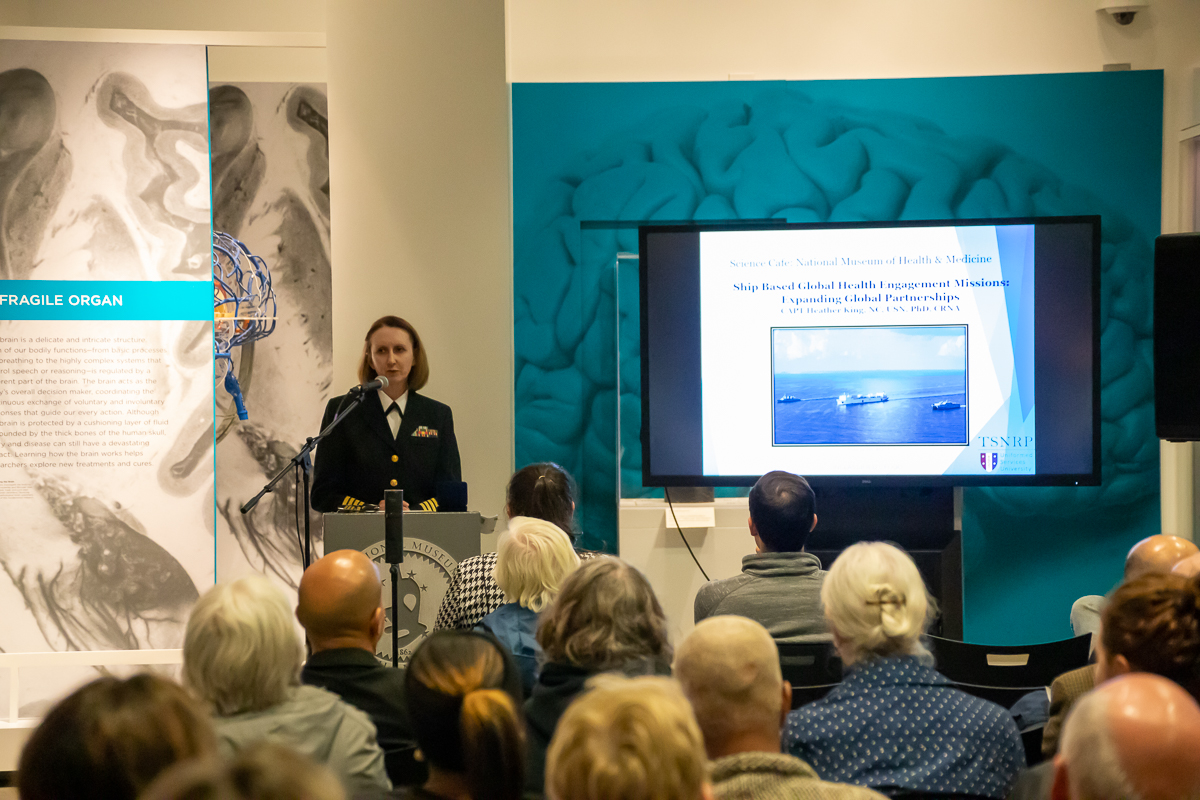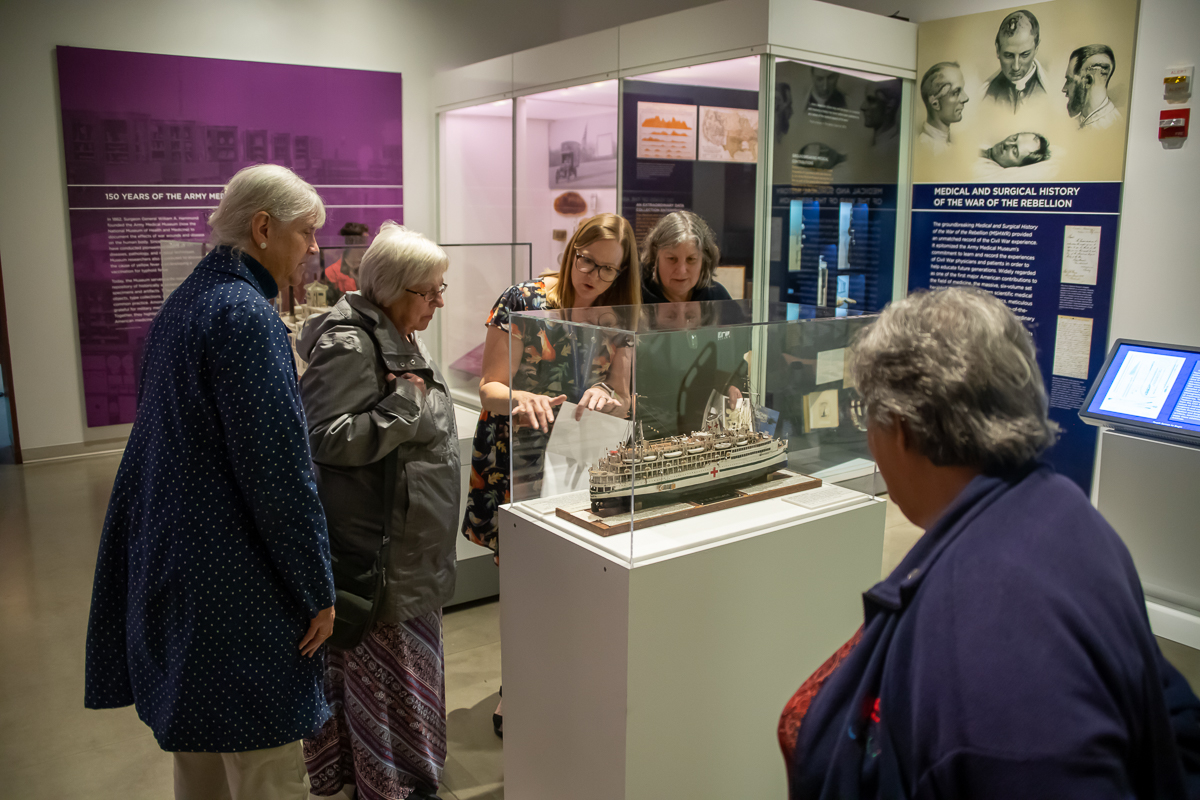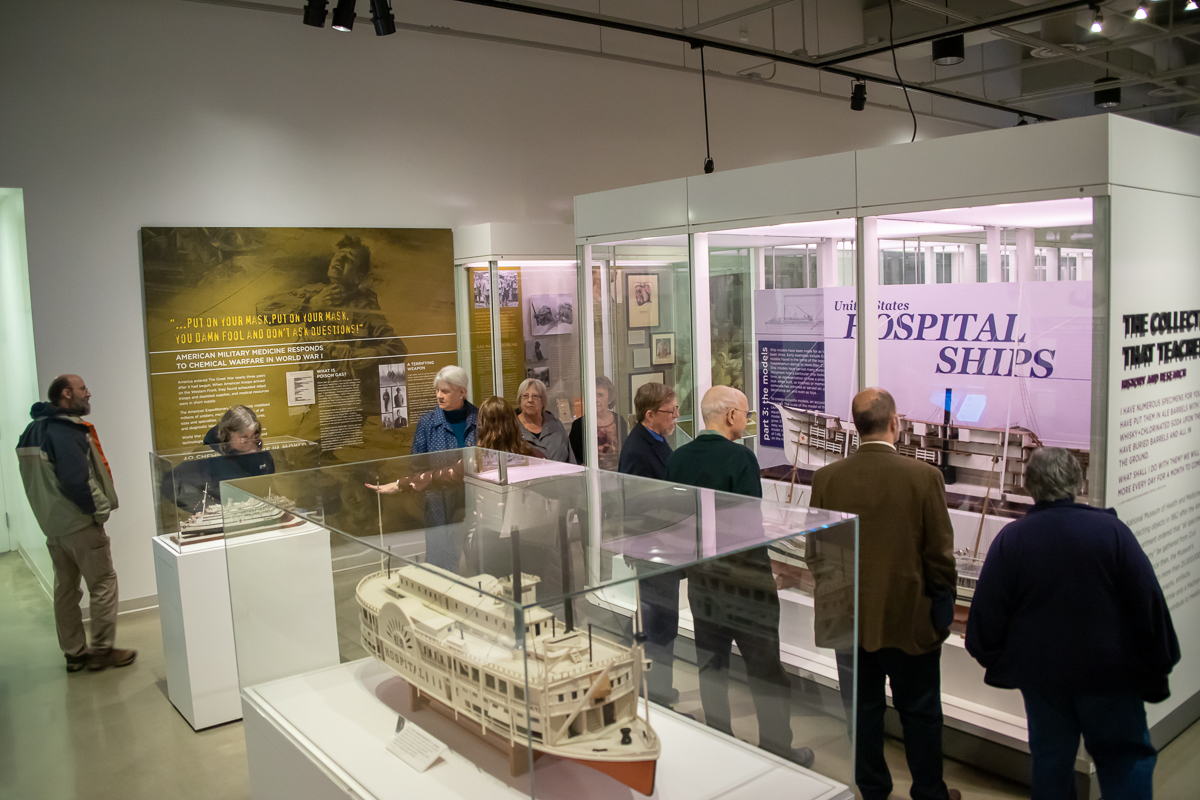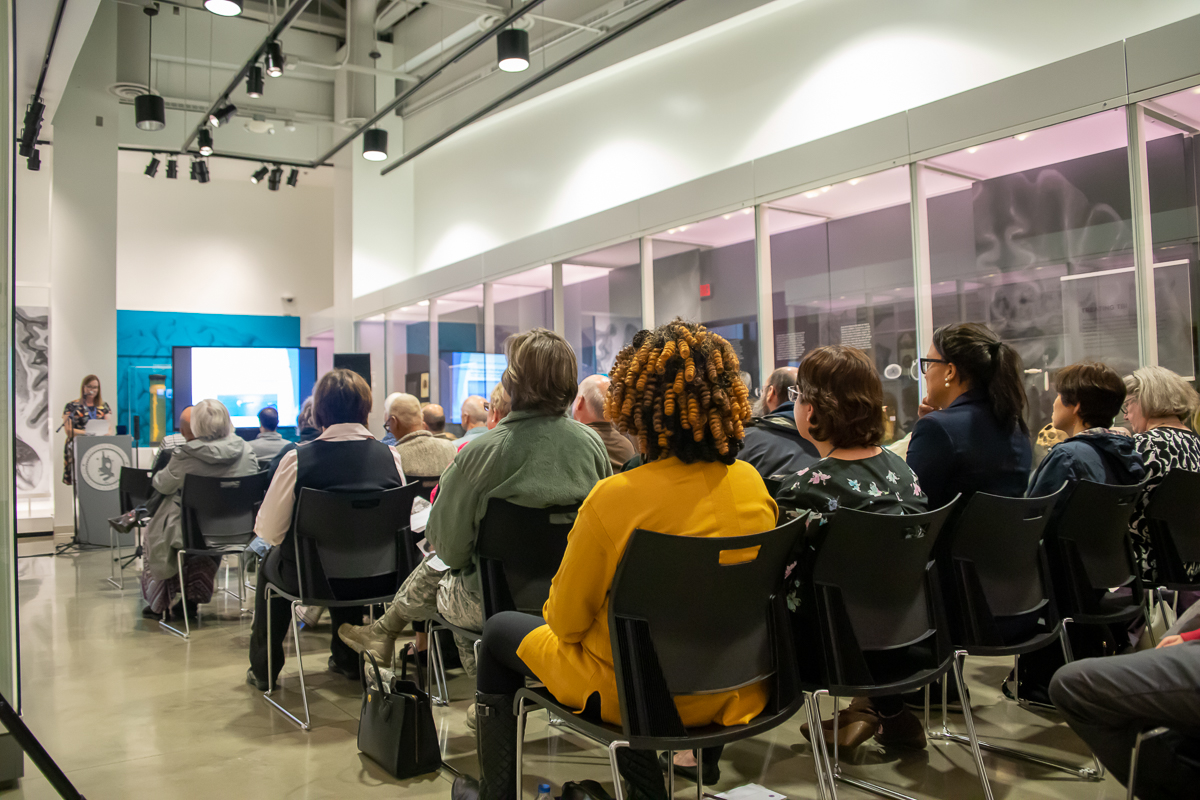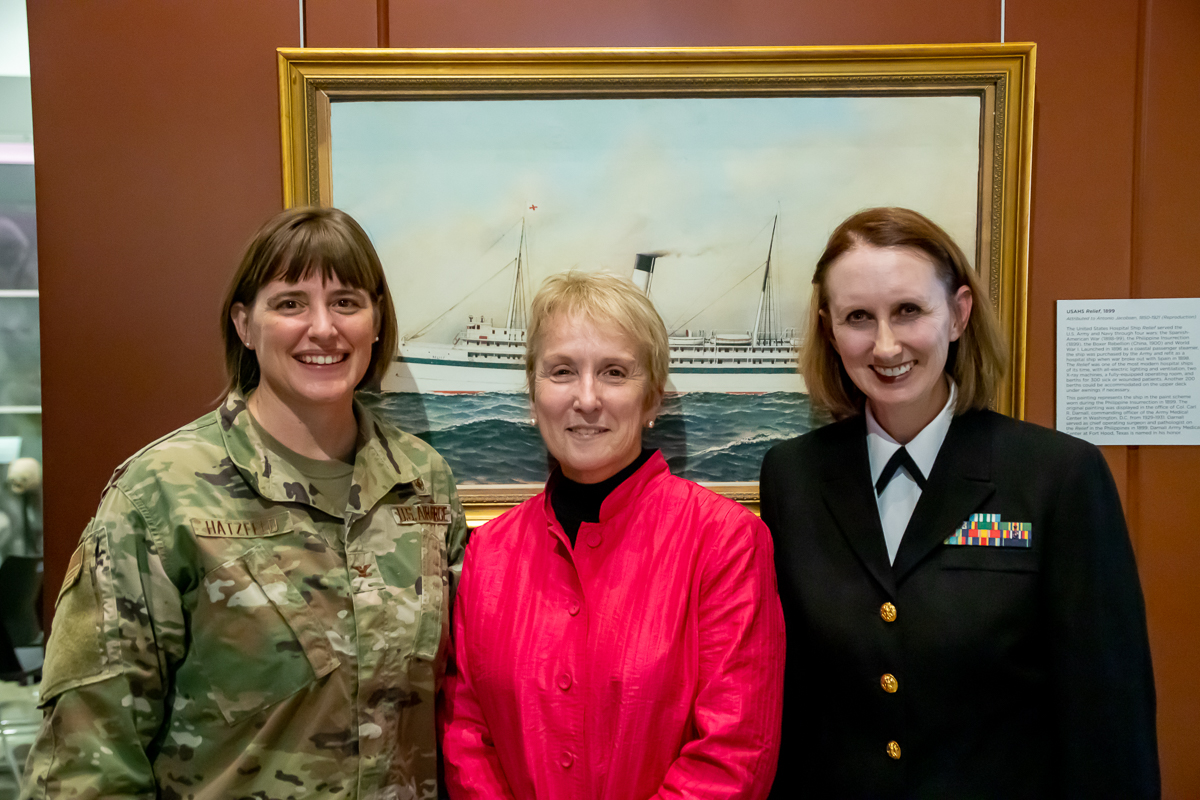Global Partnerships and Military Readiness: A Look at Ship-Based Global Health Engagement Missions
By Jacqueline Gase
NMHM Public Affairs Coordinator
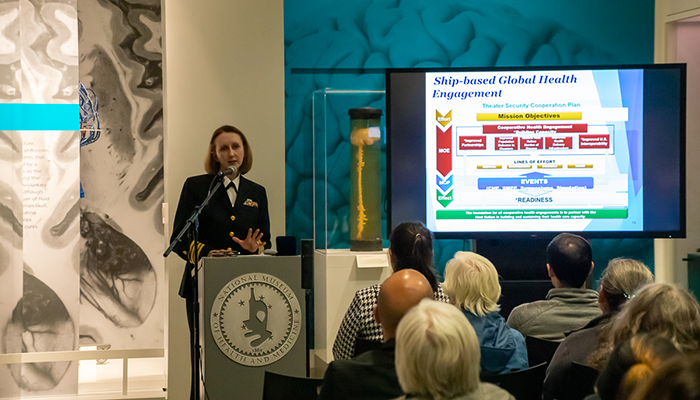
U.S. Navy Capt. Heather King, executive director of the TriService Nursing Research Program at the Uniformed Services University, details the process of ship-based global health engagement missions during the October 22, 2019, Medical Museum Science Café titled "Ship-Based Global Health Engagement Missions: Expanding Global Partnerships" at the National Museum of Health and Medicine in Silver Spring, Maryland. (NMHM photo)
"A hospital ship's primary mission is to provide care for our forces anywhere, anytime, anyplace. The secondary mission is humanitarian, civil assistance, and disaster response," said Capt. Heather King, director of the Uniformed Services University Tri-Service Nursing Research Program.
During the October 22, 2019, Medical Museum Science Café titled "Ship-Based Global Health Engagement Missions: Expanding Global Partnerships," King detailed the objectives and particularities of ship-based global health engagement missions that build partnerships and contribute to our National Security Strategy.
King first discussed the evolution of modern hospital ships from their conception in the Civil War to the still active USNS COMFORT (T-AH 20) and USNS MERCY (T-AH 19). Over time, the hospital ship modernized from a makeshift operating room on a steamer to a fully operational floating hospital with numerous capabilities. Today, the USNS COMFORT and USNS MERCY can offer comprehensive care to up to 1,000 patients.
As King has many operational experiences aboard the USNS MERCY, her presentation focused on the USNS MERCY Pacific Partnership 2018, describing the intricacies of a ship-based global health engagement mission. The main objectives on the Pacific Partnership 2018 mission were to improve partnerships, build host nation capacity, improve U.S. interoperability, and support military readiness.
In order to achieve these objectives, mission personnel focused on major lines of effort: medical, engineering, community relations, and disaster response. Each line of effort was executed through subject matter expert exchanges, community health engagements, symposia, and high-fidelity simulations where USNS MERCY personnel collaborated with host and partner nation personnel.
Medical engagements, such as professional exchanges and side-by-side care, supported the mission's objectives of improving partnerships and building capacity. King described a course provided by USNS MERCY military healthcare personnel in Sri Lanka called "Helping Babies Breathe." This basic course on how to resuscitate babies after birth helped to develop the capabilities of healthcare personnel and improve the infrastructure of the host nation. The visit to Sri Lanka also supported interoperability with the Sri Lankan Navy as it was the first visit by a U.S. hospital ship to the nation.
Disaster preparedness training was another line of effort focused on collaboration between the USNS MERCY healthcare personnel, Naval Hospital Yokosuka, Japan and the Japanese government. "There were a lot of lessons learned [from the disaster training in Japan] that improved our military medical readiness," said King.
While ship-based global health engagement builds partnerships between other nations, it also provides military and civilian personnel with the opportunity to develop their own professional and research interests. "The hospital ship acts as a floating university as well as a hospital," said King. Courses like the "Military Medical Humanitarian Assistance" and "Fundamentals of Global Health Engagement" enhance both civilian and military readiness and support professional goals.
During Pacific Partnership 2018, the USNS MERCY executed 678 events, had approximately 13,000 patient encounters, and engaged with over 10,000 host nation participants.
"Global health engagement is an important priority for military medicine, and one the museum is proud to share through educational programs, collecting efforts, and exhibitions," stated Public Programs Manager Andrea Schierkolk. The museum recently unveiled a new temporary exhibit titled "United States Hospital Ships," on display through mid-March 2020. This exhibit features hospital ship models from museum collections, as well as several on loan from the Naval Sea Systems Command.
The museum's public programs provide forums for informal learning that connect the mission of the Department of Defense museum with the public. For more information about upcoming events, call (301) 319-3303 or visit https://www.medicalmuseum.mil.
